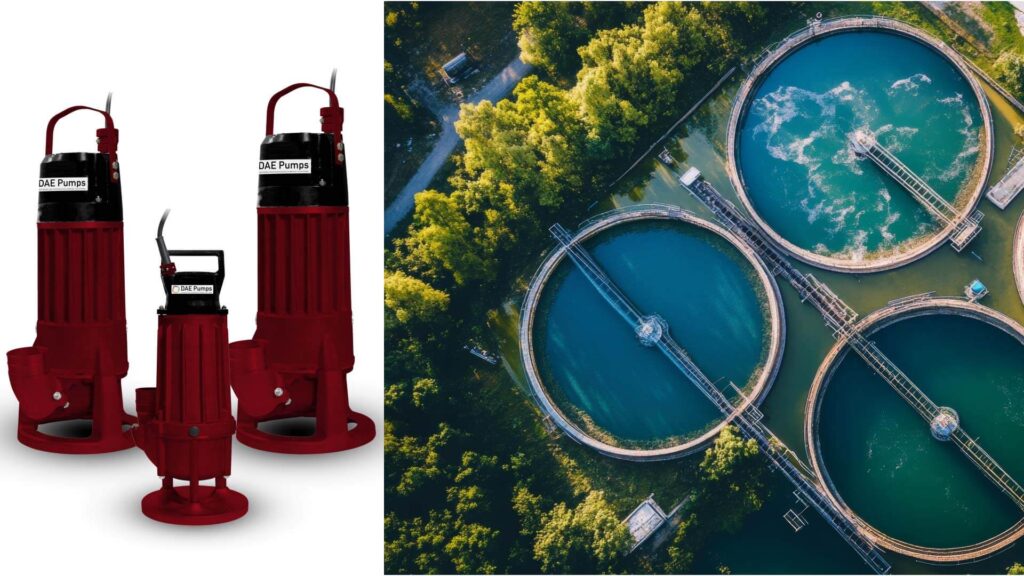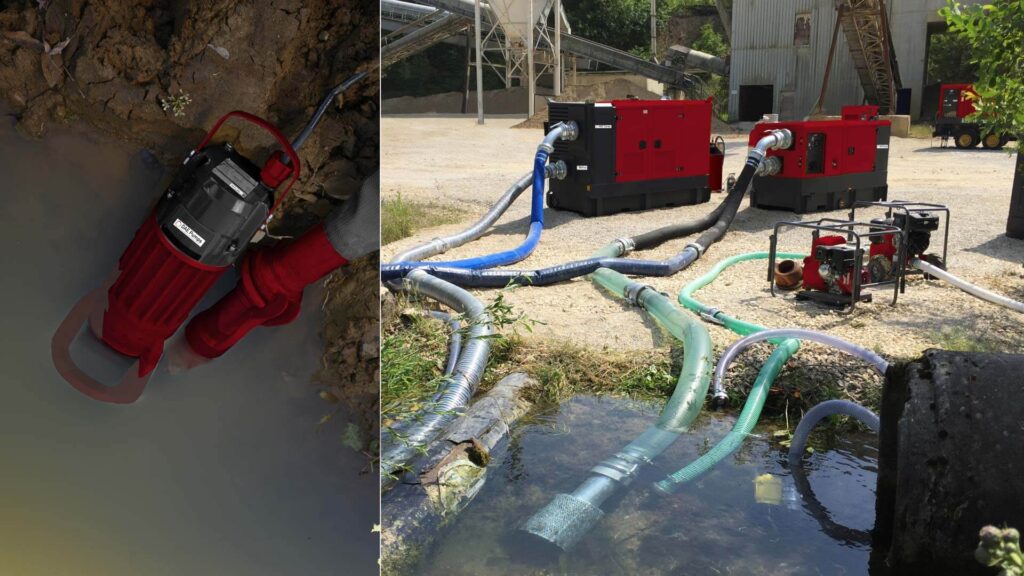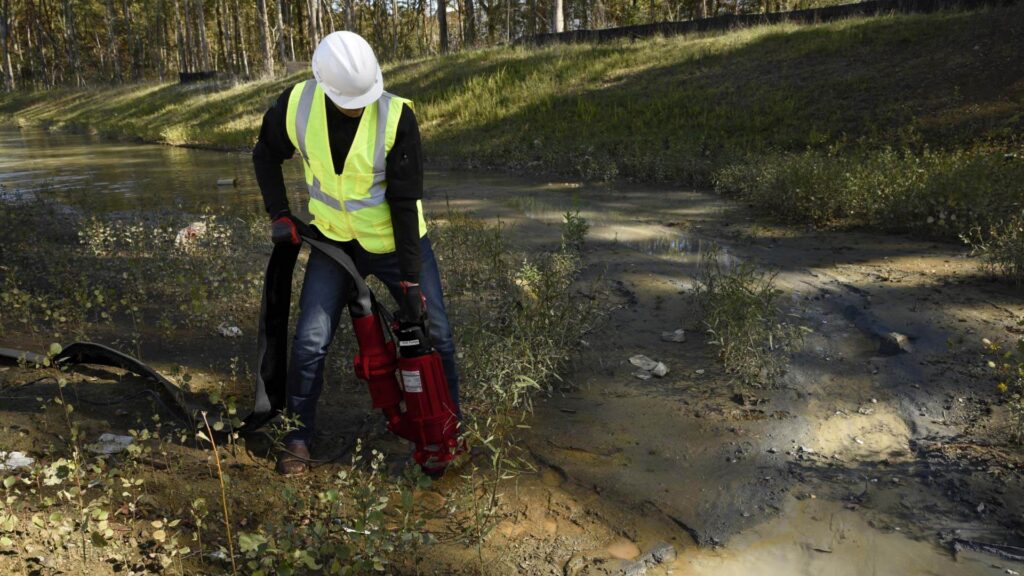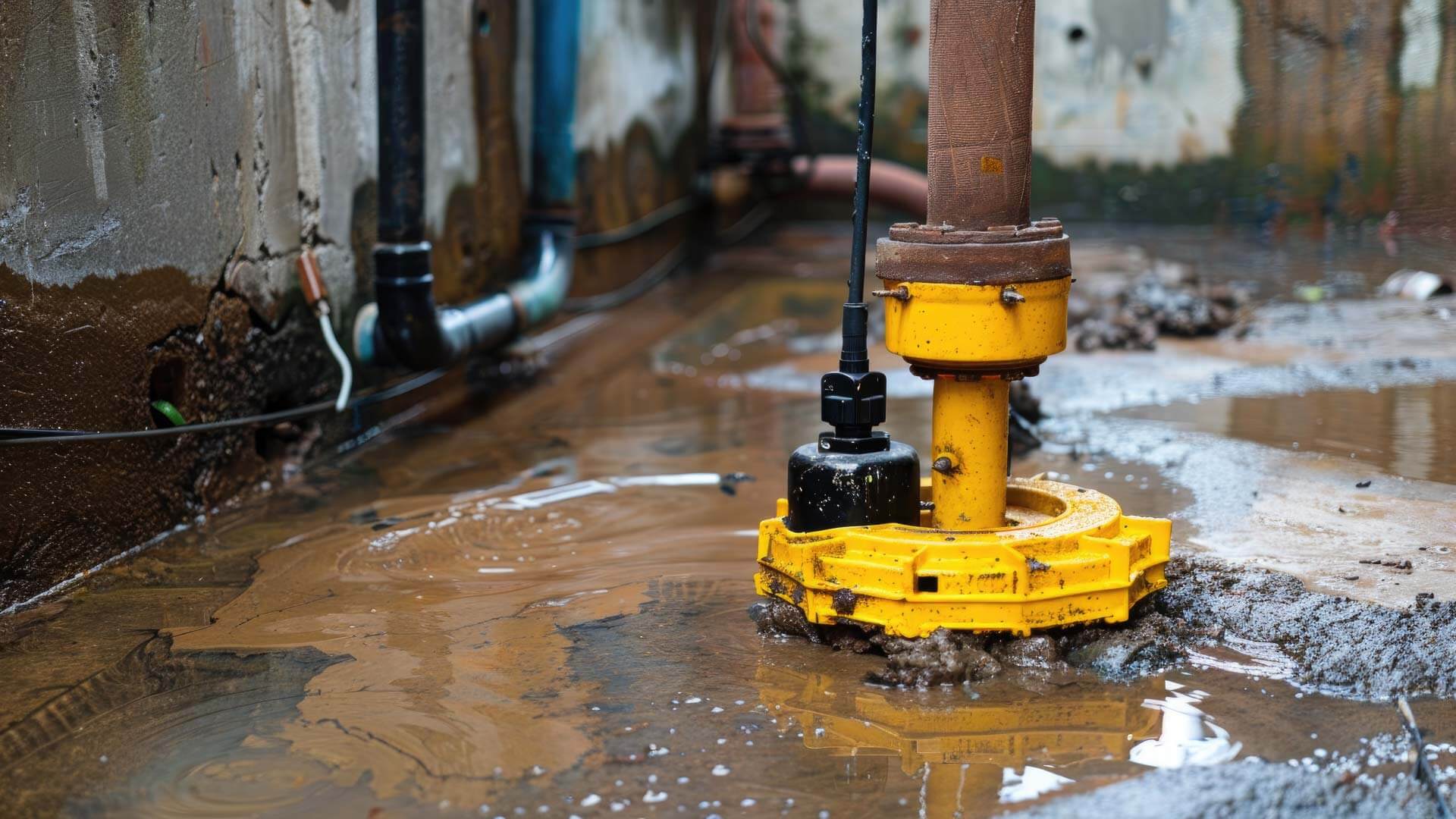Overview of Submersible Pump Rental
Submersible pump rental has become an essential solution for a wide range of industries, including construction, mining, wastewater management, and industrial operations. A submersible pump is designed to operate while fully submerged in water or other fluids. Unlike surface pumps, submersible pumps are placed directly at the source of the liquid, allowing them to push fluids to the surface while minimizing energy loss efficiently. Their design makes them highly effective for removing water, sludge, and slurry from difficult-to-access areas.
The growing demand for submersible pump rentals stems from their versatility and ability to handle tough pumping conditions. In construction, submersible water pump rentals are commonly used for dewatering excavation sites and controlling groundwater levels. In mining and industrial applications, submersible pumps are essential for managing wastewater and transferring slurry or abrasive fluids. Renting a submersible pump provides a cost-effective alternative to purchasing, especially for short-term or specialized projects. Submersible pump rentals allow businesses to access high-performance equipment without the long-term financial commitment of ownership, while also benefiting from maintenance and technical support provided by the rental company.
Importance of Choosing the Right Submersible Pump
Selecting the right pump is crucial to ensuring efficient and trouble-free operation. A mismatched or underpowered submersible pump can lead to inefficiencies, increased operational costs, and even project delays. Factors such as flow rate, head capacity, fluid type, and power source need to be carefully assessed before choosing a submersible pump rental. For example, a pump designed for clear water may fail or become damaged when used to handle slurry or abrasive materials. Similarly, a pump with insufficient head capacity may struggle to move water over long distances or significant elevation changes, reducing overall performance.
Understanding the specific requirements of the project is key to selecting the right submersible water pump rental. Flow rate and head capacity are two of the most critical specifications that determine how well the pump will perform under real-world conditions. Additionally, the type of liquid being pumped—whether it’s clean water, wastewater, or sludge—determines the materials and design of the pump that will best suit the job. Choosing the wrong pump can result in mechanical failure, increased energy consumption, and added maintenance costs. Working with a knowledgeable rental provider ensures that the pump is properly matched to the project’s requirements, maximizing efficiency and minimizing downtime.
Understanding Submersible Pump Applications

Submersible pump rental is widely used across various industries due to the pump’s ability to operate efficiently while fully submerged in liquid. The versatility and power of submersible pumps make them suitable for challenging environments where water, slurry, or wastewater needs to be moved quickly and effectively. Different types of submersible pumps are designed to handle specific applications, from construction site dewatering to managing industrial wastewater and responding to emergency flooding. Renting a submersible pump allows businesses to access the right equipment for the job without the expense and commitment of purchasing, ensuring that the pump’s specifications align with the project’s demands.
Construction and Dewatering
Submersible pump rentals are widely used in construction projects, particularly for site dewatering and groundwater control. Construction sites often face challenges with excess water caused by rainfall, high water tables, or excavation work. A submersible water pump rental can effectively remove standing water from trenches, basements, and excavated areas, helping to keep the worksite dry and safe.
Specialized submersible pumps with solids-handling capability are essential for construction projects in muddy or debris-filled environments. These pumps are designed to handle silt, sand, and other particulates without clogging or reducing efficiency. In addition to groundwater removal, submersible pump rentals are also used for floodwater management, ensuring that construction schedules remain on track even after heavy rain or storm events.
Wastewater and Sewage Management
Wastewater and sewage management are among the most demanding applications for submersible pump rentals. In municipal and industrial wastewater treatment facilities, submersible pumps transfer sludge, sewage, and other heavy liquids through the treatment process. These pumps are designed to handle abrasive and corrosive materials, ensuring consistent flow rates and preventing blockages.
A submersible water pump rental for wastewater applications must be capable of handling solid-laden fluids and withstanding chemical exposure. Pumps made from materials like stainless steel or cast iron offer increased resistance to corrosion and wear, making them ideal for wastewater and sewage treatment environments. Proper flow rate and pressure settings are critical for maintaining the efficiency of the overall treatment system. Renting a submersible pump designed for these harsh conditions ensures reliable performance and reduces maintenance costs.
Mining and Industrial Use
Mining and industrial operations often require heavy-duty submersible pump rentals to handle dewatering, slurry transport, and process water management. In mining applications, groundwater and stormwater infiltration into tunnels and shafts can halt operations and create unsafe working conditions. A high-head submersible pump rental is ideal for deep mining applications where water needs to be pumped from significant depths.
Submersible pumps used in mining and industrial settings must withstand abrasive and corrosive fluids, including those containing sand, gravel, and chemicals. Slurry pumps with hardened impellers and wear-resistant coatings are commonly used to manage these demanding conditions. Submersible water pump rentals for industrial use are also available with high-flow capacities to ensure that large volumes of water or slurry are moved quickly and efficiently. Renting rather than purchasing these specialized pumps provides flexibility and cost savings for mining and industrial operators.
Emergency Flood Management
Submersible pump rentals play a critical role in emergency flood response and disaster recovery. During floods or storm events, large volumes of water can accumulate quickly, threatening infrastructure and public safety. Rapid deployment of submersible water pump rentals allows emergency response teams to manage water levels and prevent further damage.
High-capacity submersible pumps are designed to handle large volumes of water in a short period. These pumps are often equipped with automatic float switches and built-in protection features to prevent overheating or overloading. In disaster recovery scenarios, submersible pump rentals provide a reliable and immediate solution for clearing floodwaters from roads, basements, and public infrastructure. The ability to quickly access the right type of submersible pump ensures that emergency response efforts are fast and effective.
Comparing Types of Submersible Pumps for Rental

When considering a submersible pump rental, it’s essential to select the right type of pump for the specific application. Different types of submersible pumps are designed to handle various flow rates, head capacities, and fluid characteristics. Choosing the correct pump ensures optimal performance, minimizes downtime, and reduces maintenance costs. Understanding the differences between dewatering pumps, sludge and slurry pumps, sewage pumps, and high-head pumps allows you to match the pump’s capabilities to the unique demands of your project. Renting a submersible water pump tailored to your application ensures greater efficiency and reliability.
Dewatering Pumps
Dewatering pumps are designed for high flow rates and low head capacity, making them ideal for construction sites, mining operations, and flood management. These pumps are used to move large volumes of clean or slightly dirty water quickly and efficiently. A submersible pump rental for dewatering applications is commonly used to control groundwater, drain flooded areas, and manage stormwater runoff.
Dewatering pumps are lightweight, easy to deploy, and capable of handling minor debris without clogging. Their high flow rate allows them to clear large areas quickly, but they are not suited for handling thick sludge or highly abrasive materials. For construction or mining sites where rapid water removal is necessary, a dewatering submersible pump rental provides a fast and reliable solution.
Sludge and Slurry Pumps
Sludge and slurry pumps are built to handle high head capacities and solid-laden fluids, making them suitable for industrial and mining applications. Unlike dewatering pumps, they are designed to manage thick, abrasive mixtures of water, mud, sand, and solid particles without clogging or losing efficiency.
An industrial submersible pump rental for slurry applications typically features hardened impellers and wear-resistant coatings to withstand the abrasive nature of the pumped material. These pumps also have high-powered motors to maintain consistent flow rates under heavy load conditions. They are commonly used in mining shafts, wastewater treatment plants, and industrial processing facilities where solid materials are present in the pumped fluid. Renting a slurry pump ensures that the equipment can handle tough operating conditions without premature wear or failure.
Sewage Pumps
Sewage pumps are designed to handle wastewater containing solid waste, debris, and other contaminants. These pumps feature an anti-clog design with large impeller openings and cutting mechanisms to break down solids before pumping. A submersible water pump rental for sewage applications is commonly used in municipal wastewater treatment facilities, septic systems, and stormwater management.
Corrosion resistance is a key feature of sewage pumps, as they are often exposed to corrosive chemicals and biological waste. Cast iron, stainless steel, and protective coatings are used to extend the lifespan of these pumps in harsh environments. Sewage pumps also feature automatic float switches and sensors to prevent overflow and manage varying fluid levels. Renting a sewage pump ensures that the pump can handle challenging wastewater conditions while minimizing maintenance issues.
High-Head Pumps
High-head pumps are designed for high-pressure applications where water needs to be lifted or transported over long distances or from deep depths. They are commonly used in mining, tunneling, and construction projects involving elevation changes and extended pipe networks.
A high-head submersible pump rental features a powerful motor and a multi-stage impeller system to generate the necessary pressure. These pumps are capable of operating at significant depths while maintaining high flow rates. Their design allows them to handle corrosive and abrasive fluids, making them ideal for mining dewatering and industrial water transfer. Renting a high-head pump ensures that the equipment can meet the demands of challenging elevation and pressure conditions without sacrificing efficiency.
Cost Considerations and Budgeting

Understanding the cost factors associated with submersible pump rental is essential for managing project budgets and avoiding unexpected expenses. Renting a submersible pump offers a cost-effective alternative to purchasing. Still, it’s important to carefully evaluate the total cost of the rental, including base rates, maintenance fees, and potential hidden charges. Proper budgeting ensures that the project remains on track financially while securing the right equipment for the job. By working with a reputable rental provider, you can access high-performance submersible pump rentals with flexible pricing and reliable support.
Rental Costs
The cost of renting a submersible pump depends on several key factors, including the pump’s size, capacity, power source, and the duration of the rental period. Larger pumps with higher flow rates and head capacities generally command higher rental rates due to their increased power and specialized construction. Similarly, pumps designed to handle abrasive or corrosive fluids, such as sludge and slurry pumps, may have higher rental costs due to their heavy-duty design and wear-resistant materials.
Rental providers typically offer flexible pricing structures, including daily, weekly, and monthly rates. Short-term rentals may be more expensive on a per-day basis, but long-term rentals often provide discounts and lower overall costs. For large-scale or ongoing projects, monthly rentals offer the best value. Additional fees may apply for delivery, setup, and maintenance services. If the submersible water pump rental requires specialized installation or adjustments, these costs should be factored into the total budget. Discussing these details upfront with the rental provider helps prevent surprise charges down the line.
Maintenance and Service Agreements
Most submersible pump rental contracts include maintenance and service agreements to ensure that the pump remains operational throughout the rental period. Regular maintenance is essential for preventing breakdowns and maximizing pump efficiency. These agreements typically cover routine inspections, cleaning, and minor repairs. For submersible pump rentals used in harsh environments, such as mining or industrial applications, regular maintenance reduces wear and tear and prevents costly downtime.
A reliable rental provider will also offer replacement units in case of equipment failure. If a pump breaks down during the rental period, a backup unit should be available to minimize project delays. Access to 24/7 technical support and emergency service options is another valuable feature of a rental agreement. Resolving issues quickly reduces downtime and ensures that the project stays on schedule. Verifying the terms of the service agreement before signing a rental contract helps prevent misunderstandings and ensures that support is available when needed.
Hidden Costs and Additional Charges
In addition to base rental rates and maintenance fees, hidden costs can add up quickly if not accounted for during the planning stage. Installation and removal fees may apply if the pump requires professional setup or dismantling at the job site. Transport and logistics costs can also vary based on the pump’s size and weight, the distance to the job site, and any required permits or special handling requirements.
Late returns or damage to the equipment can result in significant penalties. Most rental agreements outline specific return conditions, including cleaning requirements and operational status. If the pump is returned damaged or not properly maintained, repair or replacement costs may be added to the final bill. Understanding the terms of the rental agreement, including damage liability and return policies, helps prevent unexpected costs and ensures a smooth rental experience. Taking the time to factor in these hidden charges during the budgeting process ensures that the total cost of a submersible water pump rental remains within project expectations.
Availability and Logistics
Managing the availability and logistics of a submersible pump rental is essential for ensuring that the pump is delivered, installed, and removed efficiently. Planning helps avoid delays and ensures that the right pump is available when needed, especially during peak demand periods or in emergencies. Coordinating delivery, setup, and return logistics with the rental provider streamlines the process and helps prevent unexpected costs or project downtime. Proper handling of the rental process—from initial order to final return—ensures that the submersible pump rental meets project requirements without complications.
Lead Time and Availability
Availability can be a significant challenge when renting submersible pumps, particularly during peak demand periods or emergency events. Construction, mining, and industrial projects often have overlapping seasonal demand for submersible water pump rentals, which can limit the availability of specific pump models. For emergencies, such as flood response or equipment failure, securing a rental unit quickly is critical to minimizing damage and downtime.
To avoid availability issues, it’s important to plan and confirm lead times with the rental provider. For large-scale or time-sensitive projects, reserving the pump well in advance ensures that the right equipment will be available when needed. For critical operations where downtime is not an option, securing a backup submersible pump rental is a smart strategy. Having a standby unit on site provides a reliable fallback option in case of mechanical failure or increased demand. Working with a rental company that offers flexible inventory and quick turnaround times ensures that equipment shortages or delays are minimized.
Delivery and Setup
Coordinating delivery and setup is an important part of the rental process. Many submersible water pump rentals are large and heavy, requiring specialized transport and handling. Rental companies typically offer multiple delivery options, including direct-to-site delivery and scheduled installation services. Confirming the delivery timeline and transport details helps avoid scheduling conflicts and ensures that the pump is ready for operation when the project begins.
The rental provider may also offer on-site setup and commissioning support. Professional installation ensures that the pump is positioned correctly, properly connected to the power source, and operating at optimal efficiency. Coordinating with site personnel and project managers during setup helps address any site-specific challenges, such as restricted access or safety requirements. Ensuring that the pump is fully operational before the project starts helps prevent early-stage disruptions and performance issues.
Return and Removal Process
Properly managing the return and removal process helps avoid additional fees and ensures a smooth conclusion to the rental agreement. Most rental contracts specify the condition in which the pump must be returned, including requirements for cleaning, decontamination, and operational status. For submersible pump rentals used in industrial or wastewater applications, removing residue, sludge, and contaminants from the pump before return is often required.
When returning the pump, ensure that all documentation is properly completed to prevent disputes or delays in closing out the rental agreement. Inspect the pump for damage and confirm that all accessories and components are included to avoid additional charges. Returning the pump on time, in good working condition, and with proper documentation ensures a hassle-free conclusion to the rental process. Careful handling of the return process also improves the relationship with the rental provider, making future rentals easier to coordinate.
Benefits of Renting vs. Buying a Submersible Pump
Renting a submersible pump offers significant advantages over purchasing, especially for projects with specific or short-term requirements. Submersible pump rental provides flexibility, cost savings, and access to specialized equipment without the long-term financial commitment of ownership. Whether it’s for construction, mining, wastewater management, or emergency flood response, renting allows you to match the right equipment to the job without the burden of ongoing maintenance and storage. For businesses looking to optimize performance and control costs, submersible pump rentals provide an efficient and practical solution.
Cost Savings
One of the biggest advantages of submersible pump rental is the lower upfront cost compared to purchasing. High-performance submersible pumps, especially those designed for industrial and heavy-duty applications, can be expensive to buy outright. Renting allows businesses to access top-tier equipment without the capital investment, freeing up financial resources for other project needs.
Renting a submersible pump also significantly reduces maintenance and repair costs. Most rental agreements include regular maintenance and troubleshooting support, ensuring that the pump remains in peak condition without additional expense. For short-term or seasonal use, renting is far more economical than purchasing, as you only pay for the pump when it’s needed. Renting also eliminates the need to budget for long-term storage, depreciation, and eventual replacement, further reducing total operating costs.
Access to Specialized Equipment
Submersible water pump rentals give businesses access to a wide range of specialized equipment designed for specific applications. Different types of submersible pumps—such as dewatering pumps, slurry pumps, and sewage pumps—are built to handle varying flow rates, head capacities, and fluid characteristics. Renting allows you to select the right pump for each project, ensuring optimal performance without the limitations of owning a single type of pump.
Renting also eliminates the need to store or maintain the pump when it’s not in use. For businesses that handle different types of projects, the ability to test different models before committing to a purchase is an added benefit. By working with a knowledgeable rental provider, businesses can select the best pump for the job based on real-world performance, rather than relying on theoretical specifications alone.
Technical Support and Expertise
Another key benefit of submersible pump rental is the access to expert support and maintenance services. Rental providers typically offer professional advice on pump selection, setup, and operation, ensuring that the equipment is properly matched to the project’s demands. This reduces the risk of mechanical failure and ensures that the pump operates at maximum efficiency.
Most rental agreements include maintenance and troubleshooting support, reducing downtime and preventing costly delays. If the pump experiences a breakdown or operational issue, replacement units are often available on short notice, minimizing disruptions to the project. Quick access to technical support and backup equipment ensures that the project stays on track even when unexpected challenges arise. With a submersible pump rental, you gain not only the right equipment but also the professional expertise needed to keep it running smoothly.
Conclusion
Renting a submersible pump offers significant advantages for a wide range of industrial, construction, wastewater management, and emergency applications. By choosing a submersible pump rental instead of purchasing, businesses can reduce upfront costs, eliminate maintenance expenses, and gain access to specialized equipment tailored to specific project needs. Careful consideration of factors such as flow rate, head capacity, fluid type, and operating conditions ensures that the right pump is selected for optimal performance. Additionally, working with a trusted rental provider guarantees access to expert support, quick replacements, and flexible rental terms, ensuring that projects remain on schedule and within budget.
The ability to rent different types of submersible pumps—such as dewatering, slurry, sewage, and high-head pumps—provides the versatility needed to handle a wide range of challenging conditions. Planning, securing backup units, and understanding the rental agreement terms help prevent unexpected costs and downtime. With the right submersible water pump rental, businesses can improve operational efficiency, respond to emergencies quickly, and manage complex fluid handling tasks with confidence. Submersible pump rentals provide a cost-effective and reliable solution for both short-term and long-term projects.




